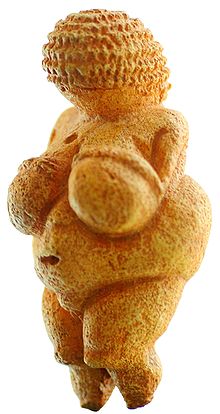Supernormal stimulus

A supernormal stimulus or superstimulus is an exaggerated version of a stimulus to which there is an existing response tendency, or any stimulus that elicits a response more strongly than the stimulus for which it evolved.
The concept is derived from ethology. Konrad Lorenz observed that birds would select for brooding eggs that resembled those of their own species but were larger. Niko Tinbergen, following his extensive analysis of the stimulus features that elicited food-begging in the chick of the Herring Gull, constructed an artificial stimulus consisting of a red knitting needle with three white bands painted round it; this elicited a stronger response than an accurate three-dimensional model of the parent's head (white) and bill (yellow with a red spot).[1]Tinbergen and his students studied other variations this effect. He experimented with dummy plaster eggs of vsarious sizes and mrakings finding that most birds preferred ones ith more exagerated markings than their own, more saturated versions of their color, and a larger size than theri own. Small songbirds which laid light blue grey-dappled eggs preffered to sit on a bright blue black polka-dotted dummy so large they slid off repeatedly. Territorial male stickleback fish would attack wooden floats with red undersides--attacking them more vigorously than invading male sticklebacks if the underside were redder.[2]
Lorenz and Tinbergen accounted for the supernormal stimulus effect in terms of the concept of the innate releasing mechanism; however this concept is no longer widely used. The core observation that simple features of stimuli may be sufficient to trigger a complex response remains valid, however.
It is sometimes argued that phenomena such as sexual fetishes can be partially explained as examples of supernormal stimulation. In the book, Waistland[3], Deirdre Barrett invokes the concept to explain junk food as an exagerated stimulus to cravings for salt, sugar, and fats and television as an exageration of sucial cues of laughter, smiling faces and attention-grabbing action. Modern artifacts may activate instinctive responses which evolved in a world without magazine centerfolds or double cheeseburgers, where breast development was a sign of health and fertility in a prospective mate, and fat was a rare and vital nutrient.
An episode of the PBS science show NOVA showed an Australian beetle species whose males were sexually attracted to large and orange females—the larger and oranger the better. This became a problem when the males started to attempt to mate with certain beer bottles that were just the right color. The males were more attracted to the bottles than actual females.
References
- ^ Tinbergen, Niko The Herring Gull's World (1953) London, Collins
- ^ Tinbergen, Niko The Study of Instinct 1951 Oxford, Clarendon Press
- ^ Barrett, Deirdre. Waistland: The R/Evolutionary Science Behind Our Weight and Fitness Crisis (2007) NY, NY: W.W. Norton, . See especially section "Supernormal Stimuli--Why Birds Are Cuckoo" p. 31-51.
